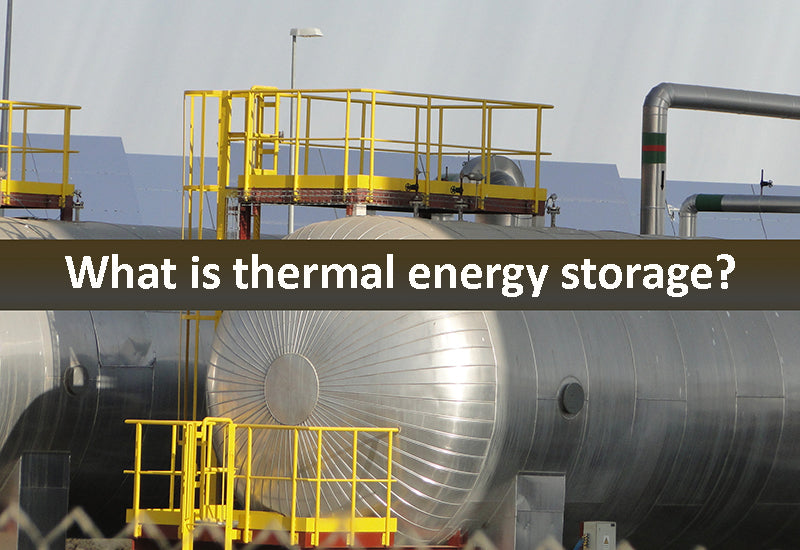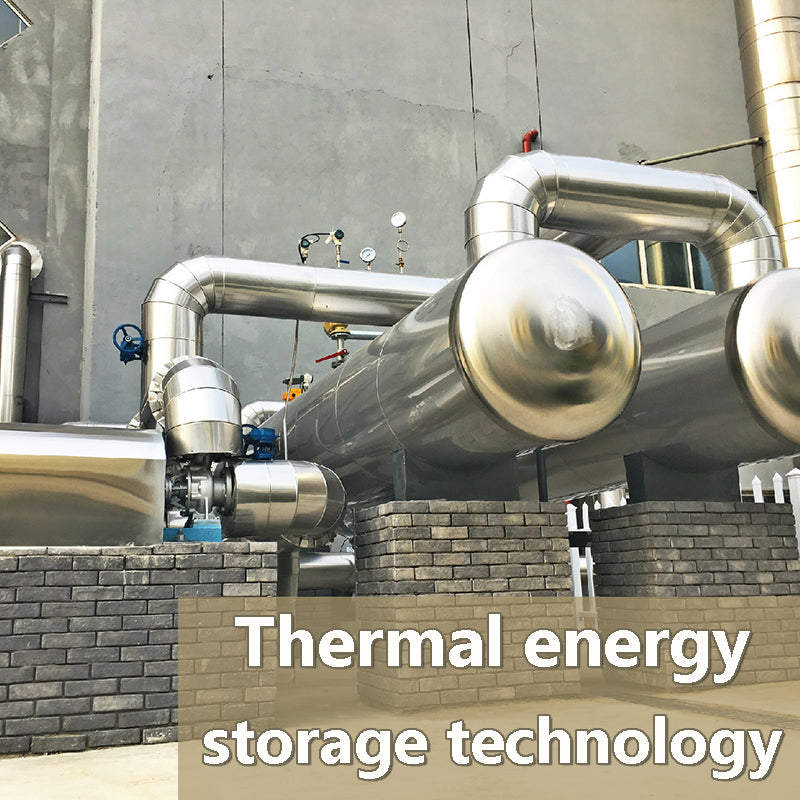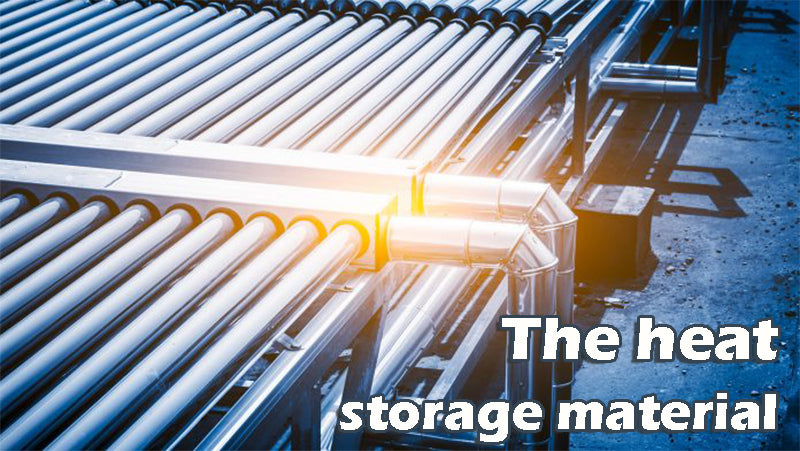
Main content:
This article focuses on storage between electricity and thermal energy, with the development potential of thermal energy storage focused on the ability to use extremely low-cost energy storage materials such as crushed rock. To take advantage of this low-cost energy storage medium, a key challenge to overcome is the low efficiency and high capital cost of converting thermal energy into electricity.
1. A brief introduction to thermal energy storage
According to the relevant data, about 75% of the world's electricity supply is generated by thermal sources, that is, power plants that burn fuel to heat steam, air or other fluids that drive turbines. As the power sector works to decarbonize, the heat source used for thermal power generation will shift from fossil fuels to a greater reliance on resources such as geothermal energy, hydrogen fuel, solar thermal energy and more. Also, you can read the article top 10 energy storage lithium battery companies to help you understand energy storage companies further.

Some of these generation facilities need to deal with changes in the availability of renewable energy generation; for these types of generation facilities, thermal energy storage can provide flexibility. Some concentrated solar power facilities, which are far less deployed than solar power facilities, already use thermal energy storage with thermal oil or molten salt to shift power from peak sunshine hours to times when user demand is met.
Relevant professionals mentioned thermal energy storage facilities for nuclear power plants to combine energy storage systems with nuclear power so that base load and peak capacity can be provided at the same time. In these roles, thermal energy storage facilities can improve efficiency, meet cogeneration needs, and provide other services. Taken together, these opportunities present further opportunities for thermal energy storage facility technologies in the future decarbonized grid.
2. What is thermal energy storage?
Thermal energy storage systems use electricity to heat materials. The heated material is then insulated until energy is needed, and finally the heat is converted back into electricity by a power conversion device. One of the main challenges for thermal energy storage: the efficiency of the thermoelectric conversion step is the limiting factor for round-trip efficiency.

By contrast, the first step (conversion of electrical energy into heat) can be accomplished with minimal losses; losses to the surrounding environment during heat storage (the second step) can also be limited to acceptable levels if adequate insulation is provided.
3. Thermal energy storage technology
The three main steps of thermal energy storage thermoelectric conversion are converting electrical energy to thermal energy, storing thermal energy, and converting thermal energy back to electrical energy. While this basic description applies to energy storage technology in its own medium, it is necessary to understand the different technology options at each step before discussing thermal energy storage systems. Some of the synergies between these options are relevant to the overall system design.
① Charging: Electric heating
Technology options for charging thermal energy storage systems (converting electrical energy into thermal energy) include resistive heaters, induction heaters or heat pumps. Heat pumps transfer heat from a low temperature environment to a high temperature environment, so they are often described as "refrigerators that run in reverse." The figure of merit for converting electrical energy into thermal energy is called the coefficient of performance (COP) to distinguish it from thermal efficiency.
Thermal efficiency is how much electricity is produced from a given amount of heat, certainly not more than 100%, and usually much lower. But COP can be greater than 100%, which means more heat is transferred than electricity is used without violating the laws of thermodynamics. For reference, a residential heat pump has a COP of around 2 to 4, depending on the environment and the desired temperature. The COP can be high for relatively small temperature differences, but decreases as the temperature difference increases.
Changes in the design of the heat pump can slightly increase the COP and adjust the ratio of high and low temperature heat energy. Higher capital and operating costs are disadvantages of heat pumps when compared to resistance and induction heaters. Its exact value is unknown because high-temperature heat pumps have not yet been commercialized. Resistive heaters can convert electrical energy into heat with a COP of over 90%, but their COP cannot exceed 100%.
Electrical resistance heaters can be placed directly in the energy storage material, built into the pipeline, or placed near a vessel or pipeline for indirect heating. Induction heating uses an oscillating magnetic field to generate heat within the energy storage material or intermediate heat transfer fluid. Induction heating can overcome some resistance to heat transfer compared to indirect resistive heating; however, induction heating equipment is more expensive and not suitable for all materials.

Maximum storage temperature will be a factor in heater selection. Current heat pump designs are around 550°C and have practical limitations due to the properties of the materials that can be used in turbomachinery. Induction heaters, meanwhile, can heat materials to 3,000°C, but ambient conditions and sealing materials may set a lower limit. Resistive heaters made of metallic materials can reach 1,400°C in an oxidizing environment, while heaters made of ceramic or other materials can exceed 2,000°C, depending on the environment.
And higher temperature heaters tend to cost more. Lower charging efficiency means more electricity will be used to store the same amount of heat. This has no effect on the storage capacity required to meet the target discharge curve, which is determined by discharge efficiency and self-discharge rate. Resistive heaters are probably the most common type of heating element used in thermal energy storage systems because of their lower unit cost.
② Thermal storage
The advantage of thermal energy storage compared to most other forms of energy storage technologies is the ability to use low-cost energy storage materials. Currently, home energy storage technology is gaining popularity, and you can read article top 5 home energy storage companies to learn more about home energy storage. Long-duration energy storage applications suitable for thermal energy storage systems target capital costs below $20/kWh.
To help understand the material selection process, thermal storage costs ($/kWh) expressed in electricity can be divided into emissions efficiency losses and thermal storage costs ($/kWh).Regardless of the exact efficiency, its cost significantly limits the materials that can be used. Some materials can cost over budget, even before accounting for containment, insulation and construction costs associated with energy capacity. Although the efficiency of this step is highly dependent on the energy conversion system used, thermal inefficiencies affect the capital cost of energy.
Therefore, high temperature materials are required because they can achieve higher efficiency.However, the cost of containment and insulation also rises with increasing temperatures. Different systems in terms of energy cost, electricity cost and thermoelectric efficiency are one of the main design challenges for thermal energy storage. The temperature-efficiency relationship generally excludes some materials whose temperature cannot exceed 400°C. These materials may still be used for applications other than power generation.
Therefore, considerations based on the energy cost of the material can quickly filter out incompatible options. The material cost per unit of thermal energy can be estimated by several variables. For sensible heat, the variables are cost per unit mass, specific heat capacity, and temperature change. For the latent heat of storage, the variables are the cost per unit mass and the latent heat of fusion; the latent heat of fusion is the energy associated with the phase transition between solid and liquid.
In addition to cost, there are several ways to classify thermal storage materials. The broadest distinction is the storage of thermal energy as sensible or latent heat. Sensible heat is obtained when the heat storage material is heated with an increase in temperature, where the term "sensible heat" refers to the fact that heat can be sensed through temperature changes. In contrast, latent heat is the heat absorbed or released at a constant temperature or temperature range during a phase transition.

One benefit of latent heat storage is higher specific energy and energy density compared to sensible heat storage. For latent heat, these values can be an order of magnitude larger than sensible heat. However, for grid-scale energy storage systems, the space occupied by the energy storage system is not a major concern. Instead, the main focus is on cost—provided that the energy storage technology can meet the requirements of a specific application. For example residential heating, a higher energy density is advantageous.
③ Discharge: thermoelectric conversion
In the thermoelectric conversion step, higher temperatures produce higher efficiencies, although further efficiency gains increase at very high temperatures (over 1,200°C). Nonetheless, one reason for the high temperature is to achieve higher radiative heat transfer rates, which are critical for some solid-state energy conversion devices. In addition to efficiency, key metrics are cost, flexibility and technology readiness. Flexibility includes startup time and cost, ramp rate, minimum load and part load efficiency.
Related articles: energy storage USA, top 10 home energy storage battery companies, top 10 portable power station companies
















